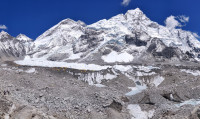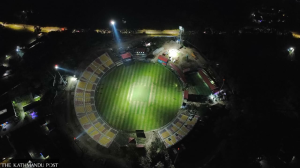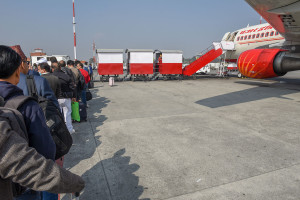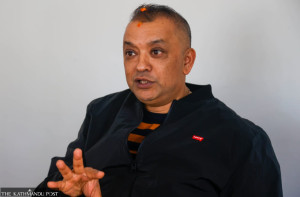Opinion
Worsening climate impacts
Droughts in the middle of the monsoon means there is something wrong somewhere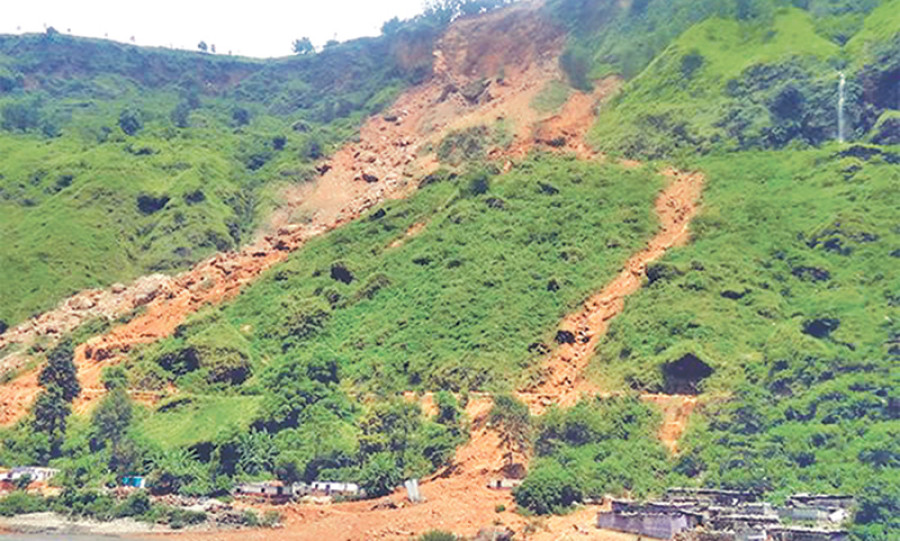
Madhukar Upadhya
Two climate events of 2018, a drought in parts of eastern Nepal and landslides caused by torrential rain in Bajura in western Nepal, have troubled environmentalists. The monsoon failed to bring water to several places in two village municipalities in Tehrathum and Panchthar districts, resulting in a severe drought in the middle of the monsoon.
Summer paddy, maize and millet crops completely failed, leading to fears of a famine that will potentially affect 5,000 people. The dire circumstances was perhaps best summarised by a local who told visiting political leaders that they could do without roads, electricity and other infrastructure, but they needed enough water to survive.
At the other end of the spectrum, about 700 km to the west of Panchthar in Bajura district in the far west, pouring rain in August caused landslides, destroyed homes, damaged farms and crops, and blocked roads—obstructing vehicular traffic and movement of people. In Burigandaki Municipality, Bajura, 147 families were displaced and hundreds are currently under threat of landslides.
Just the opposite
In 2010, the government prepared the National Adaptation Programme of Action (NAPA) to address the immediate threats of climate change. It serves as a basis for developing plans for climate action. As per the NAPA, Panchthar is shown to be moderately vulnerable to glacial lake outburst floods and landslides, and least vulnerable to droughts. Bajura has been categorised as moderately vulnerable to landslides and highly vulnerable to droughts. Reality, however, shows just the opposite.
What is happening now requires a thorough understanding of the changes taking place in the local climate, including the rate at which it is happening. It is crucial to focus on the overall monsoonal behaviour and how that has altered the rhythm of the local hydrology on which the livelihoods of the local people and, to some extent, the economy depend.
According to a 2016 government survey, most of the water sources in the mountains and hills dried up over the last few decades worsening the hardships of the people to obtain water even for daily consumption, let alone farming. To address the problem, a government project installed pumps to bring water from streams and rivers to villages up in the hills. This strategy may prove to be ill-advised for handling the problem. Attempting to deal with the crisis without understanding the cause behind the loss of water in areas where it flowed for ages will only lead to more water shortages.
Barring some exceptions, it has been noted that the monsoon has either been late or insufficient. Increasing water scarcity in the hills across the country worsened in places affected by the 2015 Gorkha Earthquake. As a result, in areas where water became acutely scarce, people migrated to water rich areas in the valleys and plains of the Tarai, often for good.
With the changing climate, the rainfall pattern has become quite erratic as expected; and more so at the local level which is hardly recorded by the few weather stations that exist. The difficulty we face is that rainfall patterns often change from ridges to valleys, and from one valley to the next. The pattern we have seen this monsoon shows that generalisation of the changes in diverse topographic conditions can lead to the wrong conclusions and subsequent solutions. Policies must be based on local-level information.
Currently, we do not have adequate or accurate information regarding how many people have migrated from the hills due to water shortages or landslides. A study conducted in 2013 to understand drought impacts revealed that the population of Panchthar declined by about 0.5 percent over one decade (2001-11). Hundreds of families from water-scarce areas migrated to the Tarai plains after they encountered a sharp decline in the production of rice, maize, millet, wheat and mustard. Croplands remained barren for several years due to a prolonged drought, and pine trees began to grow on these barren terraces. Also, as a result of migration, old paddy fields turned into shrub land with no livestock to graze on them.
Panchthar and Bajura districts, neither of which was listed as being highly vulnerable by NAPA, have faced severe water shortages or widespread landslides, indicating that the problem, likely to have been caused by climate change, is worsening. The drought in the middle of the monsoon was the last straw. What was seen in Panchthar and Bajura can occur in other places in the years to come.
Politicians usually advocate relocating settlements, but this only provides a short-term solution to a limited number of people. Besides, relocation not only removes people from their roots, but also requires them to find alternate sources of livelihood, which is a challenging task. In the long run, it is important to understand what happened to the water that shaped the landscape in the first place or why Bajura should suffer from landslides even though it was not identified as a landslide-prone area by a national report.
Unchartered territory
Although landslides are considered to be aggravated by anthropogenic reasons, as seen through many examples, droughts in the middle of the monsoon is a completely unchartered territory that we have yet to find ways to deal with. Mountain environments are as varied and complex as the landscapes themselves, but our understanding has not been as strong to address this complexity.
Nature has its own way of indicating changes in the local environment by supporting change in species and land productivity. The prolific growth of pines in the drought-affected areas must be seen as an indication of drying mountains, instead of being taken as an improvement upon the environment because it is greener. Unless the science of interconnectedness of resources and all possible scenarios of likely changes in the monsoonal behaviour are better understood, handling future problems will not be easy, and that is where the future wellbeing of many of our communities lies.
Upadhya writes on issues relating to watershed, climate change, disasters and their intersections with society.




 8.12°C Kathmandu
8.12°C Kathmandu


